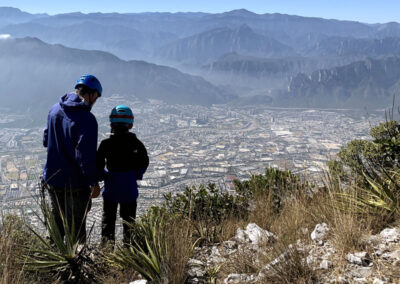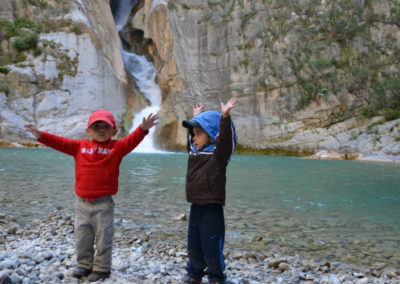It would be taking unnecessary risks ... What if they fall? What if they hurt themself? What if they are bitten by a poisonous animal? What if they get a sunburn? What if they get sick from being exposed to the cold? What if they ruins their clothes by playing in the mud? What if …? In addition, going out involves a lot of planning so that nothing is missing, everything is safe, and you have to spend time supervising them.
You might think it’s better to take advantage of the time with early stimulation so that they are on the same level as the other children in school. Better that they have personalized tutoring to get the best grades. Better that they play with toys and applications that stimulate learning. Better that they develop technological skills and learn languages in order to survive in the modern world. These activities will help learning without exposing you to the dangers that can be in nature. In addition, you can use technology anywhere and anytime. Teachers can come to your home, or you can simply spend more hours at school, and we don't have to get out of our routine to facilitate these activities.
This type of thinking has led many parents to raise their children in confinement without leaving the house and or school. Many of them are always connected to the Internet, but how connected are they to themselves and to the natural world?
Author Richard Louv, in his book "The Last Child in the Woods" (2005), coined the term "Nature Deficit Dissorder". It is not a medical term, but it is a real problem with real manifestations and consequences. Humans are designed to be in nature and being away and isolated from it for long periods of time has negative consequences. The author Connie Matthiessen (2017) summarizes the costs of this disorder raised by Louv, among which is decrease in the use of the senses, attention problems, and higher rates of physical and emotional diseases such as childhood obesity, ADD and ADHD, depression, among others.

On the other hand, according to Lauren Knight (2016), who summarizes the findings of Louv and other researchers, spending time in nature exposed to an infinity of sensory experiences, brings enormous benefits such as improvements in concentration, better motor coordination, better cognitive functioning, greater ability for creative play, decreased symptoms of mental disorders and illnesses, development of emotional and intellectual abilities, improvement of the immune system, reduced anxiety, among many other benefits.
So, going back to the initial question, “Why expose children to nature?”, the answer is simple: To maintain their comprehensive health and well-being, to improve the development of motor, intellectual, and emotional skills, and to prevent or decrease health and development problems in the various areas. Of course, like any activity, being outdoors and in nature carries its risks. However, the benefits are much greater
By comparing the risks and benefits of being in nature with those of growing up locked up, plugged into technology, and away from the natural world, it becomes clear which is the best option for children and for all those around us.






